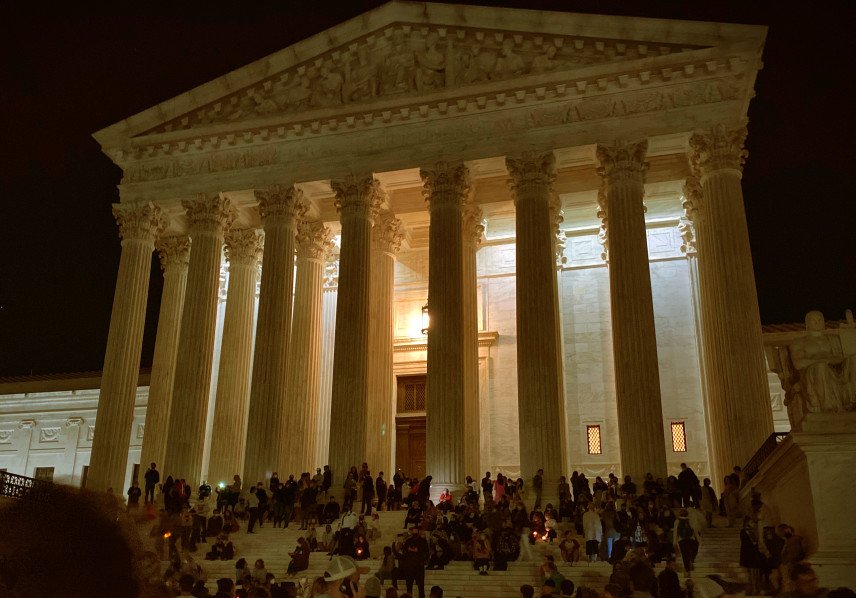
“Can This Marriage Be Saved?” was a long-running column in
the Ladies’ Home Journal that began in the early 1950s. “Can the ACA, or
Challenges to It, Be ‘Saved?’” is a more recent series of litigation
rollercoasters in the federal courts since the Affordable Care Act was enacted
in 2010. The first set of challenges to the law’s individual mandate came close
to overturning the entire law in 2012, but an unusual “saving construction” by
Chief Justice John Roberts in NFIB v. Sebelius kept Obamacare in
business. Tax, penalty, or shape-shifting Transformer? Whatever works!
Similarly in King v. Burwell, serious problems in the
law’s statutory text providing federal taxpayer funding for insurance coverage
through “an Exchange established by the State” turned out to be no problem at
all under a broader reading of the overall purpose of the law. Ambiguity? Not
when it’s close enough for more government work.
Act Three of this Shakespearean legal dramedy returns to the
Supreme Court for oral argument tomorrow morning, in California v. Texas.
The betting odds in this one are even shakier for ACA opponents. Even if they
dodge several early bullets on legal standing and the constitutional
consequences for a penalty-free individual mandate, the limits of severability
law precedent present a final steep wall to climb.

In recent decades at least, the Supreme Court has been
predisposed to save as much of constitutionally impaired federal laws as
possible (and usually even more!), including on special occasions when it feels
like rewriting original statutory provisions (see, e.g. “voluntary” Medicaid
expansions in 2012) to save the baby and
most of the cloudy bathwater.
In this latest case, the ACA challengers claim that the 2010 findings of “fact” in the ACA statute essentially constitute a non-severability clause in fact, if not form, and that means Everything Must Go if the individual mandate has become constitutionally impaired. That remains a tough legal row to hoe (even if you’re not even just growing wheat for your own consumption like Roscoe Filburn).
However, a more creative amici brief by the Cato Institute offers a better chance at a trial separation that would provide narrow relief to individuals objecting to the regulatory tie-in requirements for coverage linked to the now-vestigial individual mandate. The core argument is that the remaining mandate, after the Tax Cuts and Jobs Act removed its tax/penalty, has been stripped of the 2012 “saving construction” and is unconstitutional (again!). A number of structural features within the ACA statute help dictate this conclusion. Some sort of regulatory “command” remains that the 2010 Congress asserted, in statutory text, was essential to the functioning of other ACA insurance regulations — primarily guaranteed issue, adjusted community rating, and other pre-existing condition protections.
Cato scholars Josh Blackman and Ilya Shapiro aim to dispose of any broader statutory intent about the mandate in the 2017 TCJA by pointing out the procedural limits of reconciliation laws and the unusual implications of a new law that makes a previous one unconstitutional later, in at least some respects. Although that post-Frost–bite legal analogy breaks down in some respects (the 2017 law only undermined a judicial saving construction, not a previous statutory provision per se, and no party in California v Texas raised these fine legal points), it suggests the need for a different type of escape tunnel.
Hence, the Cato brief offers a narrow footbridge across the legal standing, severability, and political feasibility canyons that ACA legal opponents must cross in trying to gain relief. The proposed solution is to allow appropriate relief from the individual mandate to those who object to it. They could purchase non-ACA coverage in other markets, but it would not include either the law’s insurance tax credit subsidies or the ACA’s mandate-related regulatory “protections.” However, those who like their ACA subsidized and regulated coverage … could keep it!
No low-income or medically vulnerable Americans would be
hurt in the process (nor would small children or animals). Just the emptying
pockets of taxpayers, or their heirs and assigns to pay future debts.
As Young Frankenstein once exclaimed, “It … could … work!”
The post Can this ACA lawsuit be ‘saved?’ appeared first on American Enterprise Institute – AEI.
